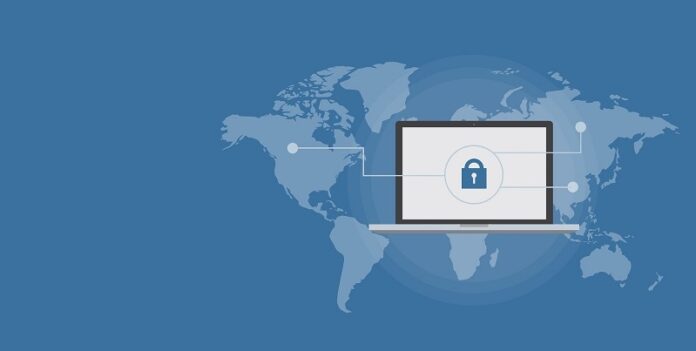Cyber-Physical Systems (CPS) are changing how we control real-world things with computers. By combining computing, networking, and physical processes, CPS can do amazing things. These extend to areas like manufacturing and healthcare. They link the real world with the digital one, using sensors, computers, and other tech to make our lives better. Even though there are challenges, like security and making everything work together, new tech like AI and 5G is making CPS even better. This promises a future full of innovation and efficiency. Interested? Take a small break from using your 22Bet login to see what the hype is all about.
Components of Cyber-Physical Systems
Cyber-Physical Systems combine parts to blend the real world with digital technology smoothly. In CPS, sensors and actuators are super important. They gather data and do stuff, making CPS work. Sensors detect physical stuff and turn it into data. For example, temperature sensors measure how hot or cold things are. We use them in HVAC systems to keep places comfy, in factories to watch machines, and in hospitals to check on patients.
Pressure sensors measure fluid or gas force, vital in industries for controlling pressure. Motion sensors detect movement, used in security, cars for safety, and electronics for control.
Proximity sensors sense if something’s there without touching it. They’re in factories, phones, and cars. Meanwhile, light sensors measure light. They’re in lights, phones, and environmental gadgets.
Chemical sensors find chemicals, used to spot pollution, analyze blood, and check quality. Actuators follow digital orders, making movements from electric signals.
Embedded systems are special computers in CPS that handle data and control things without much human help. They work reliably. Good networks are super important for sending data fast between sensors, actuators, and control systems. This keeps everything working smoothly. Control systems check sensor data and make decisions. They use smart math to make things work better, faster, and safer.
Human-Machine Interfaces (HMIs) are super important in CPS. They connect people to the digital parts of the system. HMIs let humans give commands and get info from CPS. They help keep everything running smoothly.
HMIs let operators control systems by giving commands. These include things like starting or stopping processes, and making adjustments. For example, in a factory, an HMI might help a technician change the speed of machines or set up a robotic arm.
They also show real-time data from the system, like its status and any problems. For instance, in a smart grid, HMIs might display how much electricity is being used, if the grid is stable, and if there are any issues. This helps operators fix problems quickly.
HMIs are made to be easy to use, helping operators understand and control the system better. This lowers mistakes and makes learning how to use it quicker. For example, in factories, HMIs often have touchscreens with pictures of machines and steps, making it simple to manage them.
In emergencies, HMIs are crucial for safety. They have buttons and alarms for quick response, like stopping machines or shutting down systems. This helps prevent accidents and keeps people safe, especially in dangerous environments.
In factories, HMIs are super important for running automated production lines. They let workers control machines, keep an eye on how things are going, and fix any problems. Like in a car factory, an HMI could show what stage each car is at, helping managers keep things running smoothly and fix any hiccups fast.
Applications of Cyber-Physical Systems
CPS is used in many industries to make things better, safer, and more innovative. In smart factories, CPS helps keep an eye on production and control it right away. This makes things better by improving quality, cutting down on times when things aren’t working, and making it easier to change how things are made.
In healthcare, CPS helps with fancy medical tools and systems. They watch over patients, give treatments, and can even do surgeries from far away. This makes things better by helping patients more and making healthcare faster and smarter.
CPS helps smart grids balance energy supply and demand, use renewable energy, and make grids stronger for reliable energy.
Autonomous vehicles and smart transportation systems use CPS to be safer, ease traffic, and find better routes. This makes transportation networks more efficient and eco-friendly. Precision agriculture uses CPS to watch soil, weather, and crops. This helps farmers use resources wisely, grow more, and protect the environment.
Challenges in Implementing Cyber-Physical Systems
CPS has challenges that need fixing for its full potential. Keeping CPS safe from cyber threats is crucial. Breaches can cause big harm, so strong security is a must. Combining different systems and devices is hard. We need standards and open setups for smooth teamwork.
As CPS gets bigger and more complicated, it’s crucial to make sure they can grow without slowing down. This means we need really good plans for how they’re set up and strong systems to support them.
CPS has to work well all the time, even when things go wrong. So, it’s important to build systems that can handle problems and keep running smoothly.
Following rules and regulations can be tricky because they’re different depending on where you are and what industry you’re in. Making sure CPS meets all the standards and rules is important for making it work well.
Future Potential of Cyber-Physical Systems
The future of CPS looks bright, with exciting advancements ahead. By combining AI with CPS, systems can make smarter decisions on their own, boosting performance and efficiency. The rollout of 5G networks brings big improvements to communication, which is vital for making CPS even better.
5G is super fast, with really quick response times, about 1 millisecond. This is way better than older mobile networks. Low response time is important because it means data from sensors and commands from digital systems are sent instantly. This is crucial for stuff like self-driving cars, robots in factories, and surgeries done remotely.
5G networks are much faster than 4G. They can send a lot more data quickly. In CPS, this is super useful for things like watching high-quality videos from security cameras. It helps keep an eye on the environment and get detailed health information in healthcare.
5G networks are more reliable than older ones, keeping connections steady. This is vital for CPS, where any communication problems can cause big issues. Good connections mean systems like smart grids, factories, and transport can be monitored and controlled nonstop.
Moving processing closer to where the data is created, known as edge computing, helps make systems faster. This is super important for things that need quick responses. Normally, data goes far away to big data centers for processing. This can take time because the data has to travel long distances, causing delays. Delays are called latency. In things where timing matters a lot, like getting quick responses, too much latency can be a big problem.
Edge computing brings data processing closer to its source, reducing travel distance and speeding up decision-making. For example, in self-driving cars, processing data nearby helps them quickly adapt to road changes, making them safer.
System responsiveness is vital for CPS to react fast to changes. Edge computing boosts responsiveness by handling data locally, without waiting for cloud analysis.
Creating digital replicas of physical systems allows for simulation, analysis, and optimization. Digital twins can enhance predictive maintenance, system design, and operational efficiency.
CPS can contribute to more sustainable practices across various industries by optimizing resource use, reducing waste, and enhancing energy efficiency.








